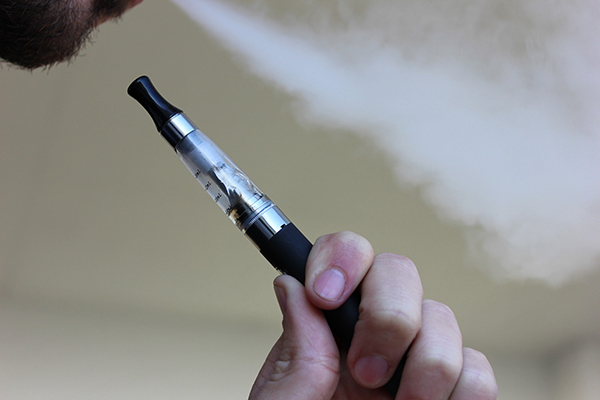Take note of your skin spots

As Seattleites take to Matthews or Alki beach, the mountains or the happy hour patio tables, it’s a critical time to remind everyone about sun protection and the risk of skin cancer.
Here in the Pacific Northwest, even on cloudy, rainy or drizzly summer days, 80 percent of the sun’s harmful ultraviolet rays will still reach your skin. Precaution is critical to your health. According to the National Oceanic and Atmospheric Administration, Seattle has clear skies just 28 percent of the time in the winter months, the lowest rate of any city in the U.S. Yet Washington state ranks eighth when it comes to the incidence of melanoma, higher than any of the southern states or Hawaii.
Start Being Sun Smart
- If you are going to be outside for more than a few minutes:
- Always wear a sunscreen with a Sun Protection Factor (SPF) of at least 30 on all exposed skin.
- Cover all the skin you can.
- Avoid the sun between 11 a.m. and 3 p.m., when it is most intense.
- Seek the shade when possible.
Spot Check
You should examine your skin regularly, at least every three months — every square inch! But how can you tell if a spot is suspicious? What to look for depends on the type of skin cancer. Below are the three most common types:
1. Basal cell carcinoma is by far the most common skin cancer, and, fortunately, it is highly curable if it’s caught early. These cancers usually show as an enlarged pink, fragile bump that may eventually get a scab or ulcer in the center. They tend to grow very slowly, and most have been present for well over a year before a patient comes in to have them checked.
2. Squamous cell carcinoma is the second most common skin cancer, and these spots are also very treatable when discovered early. However, a small percentage (2 to 5 percent) of incidences may see the cancer spread to other parts of the body, with potentially life threatening implications. These tumors are usually hard, dry, scaly bumps that can grow quickly in just a few months.
3. Melanoma is the least common skin cancer; however, it is potentially the most lethal, and early detection is key to survival.
The American Academy of Dermatology and the Skin Cancer Foundation discuss the “ABCDEs” of melanoma:
A stands for “asymmetry.” If a mole is not round or oval and even in shape, it is suspicious.
B stands for “border.” If the edges are blurry, are irregular or have protruding, fingerlike extensions, it is a concern.
C stands for “color.” A normal growth will have the same color evenly distributed, but a worrisome lesion has different shades of brown, black, gray, blue, red or white scattered in it.
D is for “diameter.” After about age 21, it is not common to get new moles, and existing moles generally do not grow in diameter. So if you have a new one that is getting larger or an older mole that starts getting larger in diameter, it needs to be checked.
E is for “evolving.” If you can see monthly changes in a mole such as size, shape or color, get it evaluated.
Because there are many common growths that occur on the skin and it can be difficult to know which lesions may be suspicious, I always recommend seeing your physician. However, here are some of the more commonly acquired benign (noncancerous) growths:
1. Seborrheic keratoses: light to dark brown, “wart-like,” stuck-on growths that gradually increase in size. These are very common and tend to run in families. Some people get many of these as they age, and they can occur anywhere on the skin surface, unrelated to sun exposure.
2. Lentigines: commonly referred to as “liver spots” or “age spots.” These are light brown, smooth, large, freckle-like growths that appear in sun-exposed areas like the face, neck and hands.
3. Actinic keratoses: pink, rough, sandpaper-like, slightly tender patches that occur most often on sun-exposed areas like the balding scalp, temples, ears, hands and forearms. These can eventually become a squamous cell carcinoma if not diagnosed and treated.
Be proactive about your skin health and watch for new or enlarging pigmented (brown) spots, especially if they are irregular in shape or color. Any new pink or red bumps that persist and enlarge over several months are of concern, especially if they are crusty or bleed or scab easily.
Dermatologists recommend that most individuals over 50 years old or those with increased risks for skin cancer have an annual, full-skin exam. Above all, remember the best rule of thumb: “When in doubt, check it out!”
E-cigarettes, Vaping and Your Health From a Doctor’s Perspective
 In light of recent reports of nearly 14 people being treated or hospitalized at Harborview Medical Center since October for serious burns caused when e-cigarette batteries exploded – Seattle parents should get a slight sigh of relief thanks to recent federal regulation. Earlier this year, the US Food and Drug Administration (FDA) finalized regulations governing the sale and production of what it calls “electronic nicotine delivery systems” (ENDS), otherwise known as e-cigarettes or “vape” products. Until now, these products had been subject to very little oversight in terms of chemical content. Claims about the safety or potential benefit for smoking cessation went unchecked, and there was no limitation on how or where the products could be marketed – using advertising techniques known to appeal to minors.
In light of recent reports of nearly 14 people being treated or hospitalized at Harborview Medical Center since October for serious burns caused when e-cigarette batteries exploded – Seattle parents should get a slight sigh of relief thanks to recent federal regulation. Earlier this year, the US Food and Drug Administration (FDA) finalized regulations governing the sale and production of what it calls “electronic nicotine delivery systems” (ENDS), otherwise known as e-cigarettes or “vape” products. Until now, these products had been subject to very little oversight in terms of chemical content. Claims about the safety or potential benefit for smoking cessation went unchecked, and there was no limitation on how or where the products could be marketed – using advertising techniques known to appeal to minors.
Since coming to market in 2006, e-cigarettes have gained popularity – particularly among teens and young adults. The Centers for Disease Control and Prevention (CDC) found that use of e-cigarettes in teens between 2013 and 2014 rose nearly three times, from 4.5 to 13.4 percent.
Among the new regulations the FDA instituted on May 5 is one that should protect young people. This law prohibits retailers from selling e-cigarettes, hookah, cigars or any other tobacco products to people under age 18. Access by young people will now be restricted in these ways:
- No sale of ENDS – online or in person – to people younger than 18
- Thorough check of photo ID
- No sales in vending machines (except in adult-only facilities)
- No free samples
The new FDA regulations will also impact manufacturers, importers and retailers of ENDS. Products will need to undergo a thorough review before they can reach the market, these regulations include:
- Registering manufacturing establishments
- Reporting a complete list of ingredients including potentially harmful chemicals
- Including mandatory health warning statements on packages and advertisements for all ENDS products
- No selling of modified-risk tobacco products (including those described as “light” or “low”) unless authorized by the FDA
ENDS come in a variety of forms, making regulations challenging. Some looks like pipes, some like cigarettes and some like small batons. On a most basic level, all of the products consist of a cartridge containing a nicotine liquid, an atomizer with a heating element and a battery. The user pushes a button on the device, which releases some liquid from the cartridge; the liquid is heated and vaporized in the atomizer, and then inhaled. Some products are completely disposable. Others have refillable cartridges and rechargeable batteries.
Because these products do not use combustible materials, like the burning paper and tobacco of a cigarette, it has been proposed that they are less risky and “healthier” than cigarettes. The vapor does not have tar or carbon monoxide, for example, two products of cigarette smoking known to contribute to lung damage. However, when researchers look at the ingredients in the nicotine liquid, they have found chemicals like glycerol and propylene glycol, which can lead to dangerous byproducts. Cancer-causing compounds such as formaldehyde have been found in some used ENDS products after the combustion of the glycerol compounds. The flavorings are potentially problematic as well, even dangerous. A Harvard study found that a compound called diacetyl is found in 75% of flavored nicotine liquids. Diacetyl is known to cause “popcorn lung,” a destructive lung disease.
Studies on the long-term effects of cigarette smoking took many decades to confirm suspicions of their harm. With e-cigarettes, scientists and physicians have not yet had decades for research, and so there is no data about the long-term health effects of regular ENDS use. Additionally, there is no clear evidence that using a vape product or any other ENDS helps people to quit smoking. Some small studies have shown ENDS may help people reduce cravings. However, whether this marks progress to quitting is unknown.
Despite the many unknowns about ENDS, their popularity is still on the rise. Surveys show that the number of participants who report trying an e-cigarette nearly quadrupled between 2010 (1.8 – 3.5 percent) and 2013 ((8.5 and 13 percent). Those using e-cigarettes on a routine basis was lower, but still rose in that timeframe.
What’s alarming about such use is it could lead to or further nicotine dependence, particularly among teenagers and young adults. Connections have been made between teen e-cigarette use and use of conventional tobacco products such as cigarettes. Studies suggest that of teen tobacco users, three out of four will continue using tobacco into adulthood. Add in marketing tactics that appeal to adolescents plus the use of enticing flavorings, of which aren’t addressed in the new FDA regulations, and the statistics are cause for concern.
When it comes to safeguarding our community’s children, there’s nothing quite like the voice of a trusted adult. Parents, guardians, teachers and other adult role models can play a significant and complementary role to the FDA’s ongoing efforts to regulate tobacco products. We all need to educate our children about the potential harms of e-cigarette use. Seattle Children’s and the CDC have additional information for parents and teachers.
Dr. Julia Becke is an internal medicine physician at PacMed.




